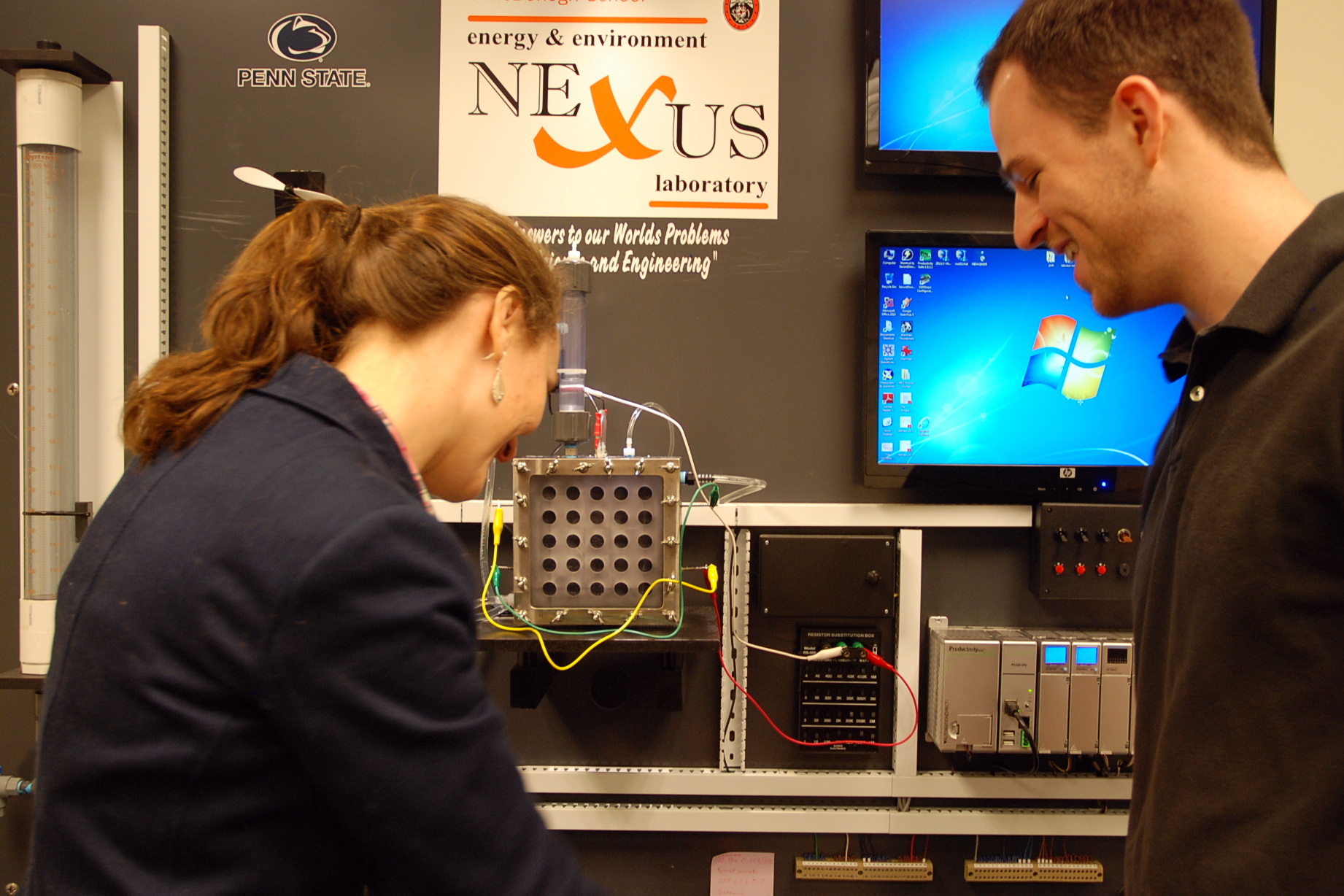
Register
Parents
Parents of current McDonogh students may sign up for website accounts. Signing up for an account allows a parent to access the online directory, DASH, and your customized parent Personal Page.
Alumni
Alumni can create an account in order to take advantage of McDonogh Connect or Pledgemail.
Login
News & Photos
Penn State Students Bring McDonogh's Nexus Lab Online


Nearly a dozen Upper School students were on hand when McDonogh’s Energy and Environment Nexus Lab officially went live on the evening of April 9. The lab came to life thanks to the work of doctoral candidate Marta Hatzell and masters’ student Mark Ullery of Penn State University and past parent Rob Kershner, who has spearheaded the effort to make the lab and the fuel cell technology an exciting part of the learning that will happen in the Naylor Building.
After working all day to connect the Microbial Fuel Cell, the big moment came when the seven-inch cube generated power to move the blade of a small fan. The power came from microbes feeding on synthetic wastewater. The fuel cell, one of three in the world of its size, is expected to inspire students to try to discover how the scaled down process could be applied to real world problems--specifically generating energy by treating waste water, rather than consuming energy during the process.
“Five percent of the energy generated by the United States goes into cleaning wastewater,” explained Kershner to students and faculty who stopped in to see the lab. “If this technology can be scaled, we could change that loss into a gain.”
Kershner arranged for the lab to be housed at McDonogh in the Naylor Building because the microbial fuel cell technology is relevant to most of the STEM disciplines. It is anticipated that it will be integrated into the curriculum shortly. In the meantime, he is impressed (but not surprised) by the interest shown by the McDonogh students, noting in particular the enthusiasm of ninth and tenth grade girls.


Nearly a dozen Upper School students were on hand when McDonogh’s Energy and Environment Nexus Lab officially went live on the evening of April 9. The lab came to life thanks to the work of doctoral candidate Marta Hatzell and masters’ student Mark Ullery of Penn State University and past parent Rob Kershner, who has spearheaded the effort to make the lab and the fuel cell technology an exciting part of the learning that will happen in the Naylor Building.
After working all day to connect the Microbial Fuel Cell, the big moment came when the seven-inch cube generated power to move the blade of a small fan. The power came from microbes feeding on synthetic wastewater. The fuel cell, one of three in the world of its size, is expected to inspire students to try to discover how the scaled down process could be applied to real world problems--specifically generating energy by treating waste water, rather than consuming energy during the process.
“Five percent of the energy generated by the United States goes into cleaning wastewater,” explained Kershner to students and faculty who stopped in to see the lab. “If this technology can be scaled, we could change that loss into a gain.”
Kershner arranged for the lab to be housed at McDonogh in the Naylor Building because the microbial fuel cell technology is relevant to most of the STEM disciplines. It is anticipated that it will be integrated into the curriculum shortly. In the meantime, he is impressed (but not surprised) by the interest shown by the McDonogh students, noting in particular the enthusiasm of ninth and tenth grade girls.